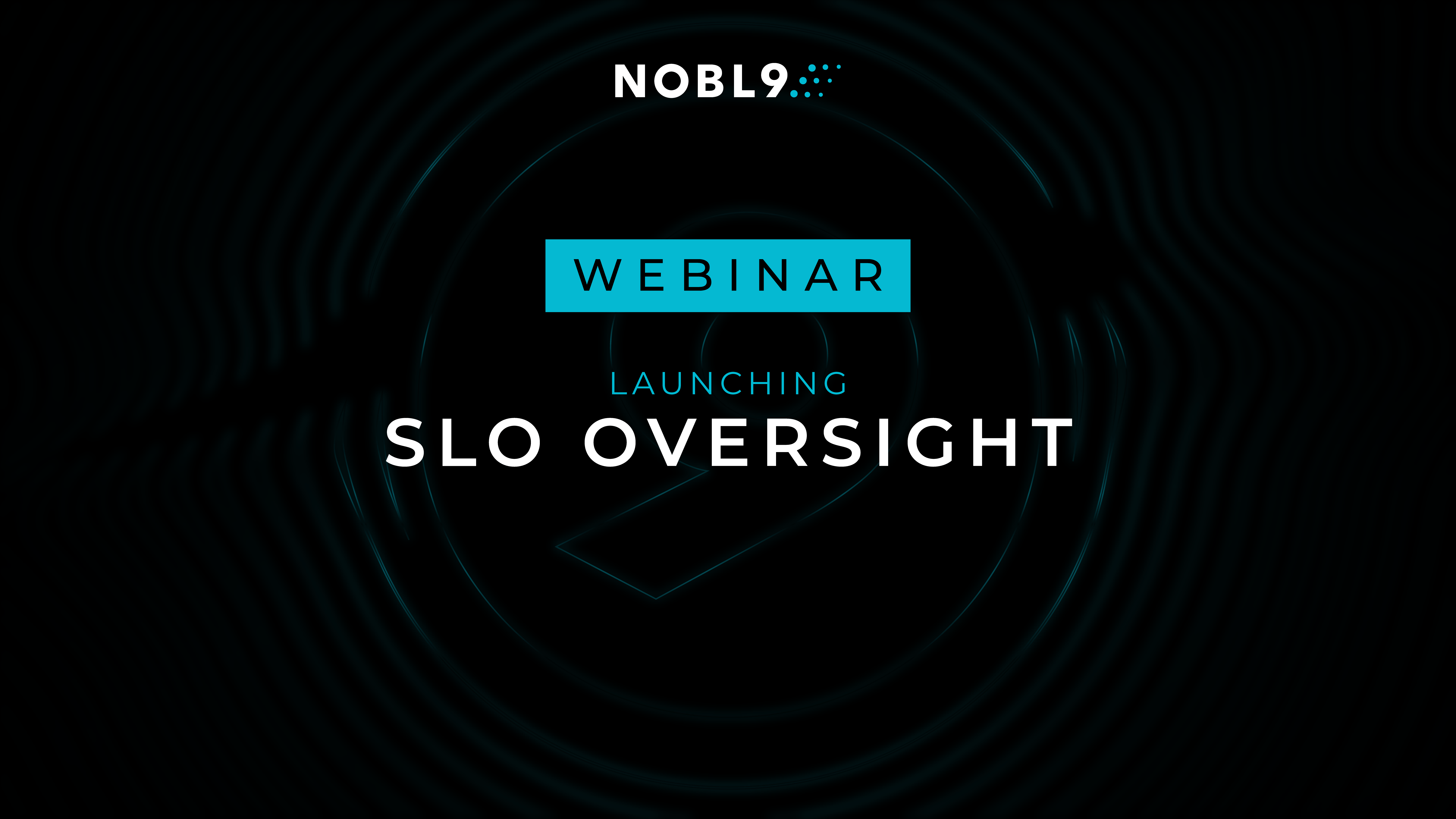More by Erza Zylfijaj:
Nobl9 Named Finalist for CRN 2024 Tech Innovator Award in Application Performance and Observability Introducing A New Way of Creating, Managing, and Sharing Reports Standardizing Reliability at Scale with Nobl9 and AWS How Two Enterprises Use Nobl9 and AWS to Stay Ahead of SLA Risk Getting more from your SLOs with faster Workflows & Smarter Context SLOs Gone Wild: Surviving Service Level Chaos with Advanced Strategies Can SLOs protect reliability when team experts leave? Is MTTR Dead? Why SLOs are Revolutionizing Reliability. How to Sell Reliability to a Skeptical Exec? Why your next head of product should obsess over reliability Strategies and Business Benefits of Implementing Service Level Objectives (SLOs) Black Friday is the ultimate reliability stress test Are You Ready For #SLOconf? Navigating Service Level Objectives and Graceful Degradation: A Webinar with Stanza, Google, & Pagerduty Building Resilient Systems: Nobl9 Achieves the AWS Resilience Software Competency| Author: Erza Zylfijaj
Avg. reading time: 2 minutes
In technical marketing, there’s no shortcut to trust. Engineers are smart, skeptical, and quick to spot fluff. If your content isn’t useful, they won’t engage. If your message isn’t clear, they’ll move on.
I recently spoke with Swapnil Bhartiya of TFiR about what it takes to engage engineering audiences and how lessons from building communities such as SLOconf have shaped our approach at Nobl9. Here are a few takeaways from that conversation.
Engineers don’t want a pitch. They want a solution.
There’s a myth that engineers aren’t buyers. The truth is, they are. But they only engage when something makes sense and solves a real problem. They don’t want vague promises. They want clear examples, practical applications, and technical content they can trust.
At Nobl9, we start with the problem. We show how SLOs help teams reduce risk, cut through noise, and focus on what matters most. We keep things clear, specific, and grounded in real use cases.
What works is simple: content that reflects real challenges and offers useful solutions. Engineers are quick to spot filler. But when they see value, they lean in. That’s the standard we aim for every time.
Community isn’t just content. It’s trust.
One of the most important things we learned from building SLOconf is that community grows through co-creation and shared purpose. SLOconf wasn’t built through paid ads or promotional campaigns. It was entirely organic. People showed up because they felt invited to shape it with us.
That trust came from putting the spotlight on the community, not the vendor. Engineers joined because it felt like something real, not a marketing play. And that mindset continues to guide how we show up in the reliability space.
SLOs help teams move from gut feel to real insight
Service Level Objectives (SLOs) help teams define what reliability actually means to their users. They offer a clear view of which services matter most and how much risk is acceptable. This is especially important in complex systems where simple uptime metrics don’t tell the whole story.
One example I shared in the interview was a team that used SLOs to pause new development for a quarter. Based on their data, they identified which services were at risk and focused on those. The result was a 40 percent drop in severe incidents in just two months. That’s the kind of shift that happens when you stop guessing and start using data to make decisions.
Work with engineers, not just for them
Some of our best content comes from collaborating with our own engineering team. I often run blog drafts by them for feedback. Their insights help make sure we’re not missing the mark, and it keeps our message grounded in real technical value.
It’s also a reminder that good marketing is a team sport. Whether it’s A/B testing a headline or asking a developer for a gut check on tone, those small steps help us stay honest and improve over time.
AI can help organize and scale content, but real connection still comes from real people. Engineers want communication that sounds like it was written by someone who gets it. That only happens when we listen, ask questions, and stay curious.
Want to dig deeper?
Check out the full TFiR article here: Marketing to Engineers: Building Trust and Driving Reliability with SLOs





.png)




.png?width=1200&height=628&name=Building%20Reliable%20E-commerce%20Experiences%20(42).png)
.png?width=1200&height=628&name=Building%20Reliable%20E-commerce%20Experiences%20(34).png)






Do you want to add something? Leave a comment